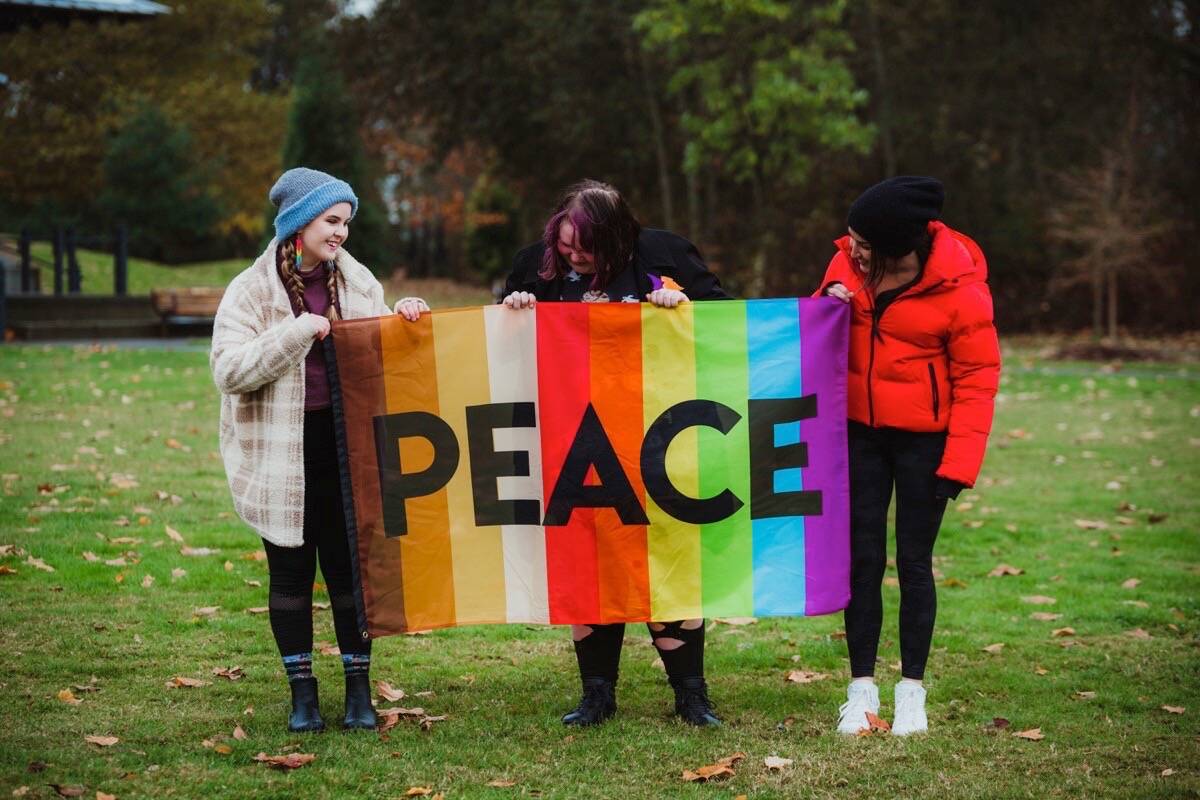Jasper Myers
Special to Black Press
Dawn to Dawn Action on Homelessness Society is working on a new initiative, in partnership with the K’ómoks First Nation and Comox Valley Pride Society, for 2SLGBTQ+ youth who are experiencing, or at risk of experiencing, homelessness in the Comox Valley.
This initiative is known as Rainbow House or by the Kwak’wala word Gukwas sa Wagalus, and is the first of its kind in the country.
Grant Shilling, an outreach worker with Dawn to Dawn, is leading the project, which addresses a gap in the social justice system when it comes to 2SLGBTQ+ youth.
“Rainbow House is peer-supported, safe housing for [2SLGBTQ+] youth 16 to 26,” said Shilling.
Peer-support is support between people who share a common experience or challenge, so in this case members of the 2SLGBTQ+ community who have experienced or faced homelessness.
For members of the 2SLGBTQ+ community, shelters are not always the safest places.
“It’s still basically male and female sleeping quarters,” said Shilling. “There’s no non-binary, there’s no recognition of that. The prejudice that still exists in society still exists in the shelters.”
The statistics of youth homelessness show just how much something like Rainbow House is needed.
“Queer youth are three times as likely as straight youth to experience homelessness,” said Shilling. “Often as a function of, when you’re that age, you come out to your folks they’re like, ‘OK out you go.’ ”
Shilling said 2SLGBTQ+ youth are more likely to end up on the street than within the shelter system and once someone gets displaced from their home, a number of things happen.
“You’re vulnerable, you usually drop out of school at that point, if you drop out of school your opportunities in the future diminish,” said Shilling. “So it creates an unhappy chain of events that lead to one, security risks, and two, jeopardizing a young person’s future.”
Rainbow House is currently being developed and Shilling said a capital campaign has been started.
“Our goal is by the fall of next year to have it up and running.”
Shilling said the idea first came about after issues arose within the community regarding transphobia and homophobia.
“So I started to do the research at that point,” he said. “What are the impacts of hatred and transphobia and homophobia on youth, and the numbers were astonishing.”
Based on the research, Shilling said he proposed the idea to the board to address the gap in services.
The goal of Gukwas sa Wagalus is to have 40 per cent of Indigenous youth represented.
“When you combine the fact that someone is queer with Indigenous the numbers are astonishing,” said Shilling. “In terms of just the general population, five per cent of Vancouver Island is Indigenous. In terms of the unhoused population, 40 per cent of the unhoused population identify as Indigenous.”
According to the 2020 Comox Valley Point in Time (PIT) count, 20 per cent of respondents were Indigenous compared to six per cent of the general population from the 2016 census. That same PIT count showed 13 per cent identified as part of the 2SLGBTQ+ community, with five identifying with trans experiences.
PIT counts are also described as undercounts due to the difficulty in finding people experiencing homelessness and their willingness to answer.
For Shilling, this isn’t simply an issue of getting shelter for people.
“The issue of homelessness is a social justice issue, it’s not a charity,” said Shilling. “It’s recognizing that people have unequal opportunities and privileges, and that impacts on their outcomes and their futures.”
The idea for Rainbow House is that it will be one communal house with each bedroom having its own bathroom, a communal kitchen, communal living space, communal outdoor space and one live-in peer support worker.
As for the response so far, Shilling said they’ve received support and he believes this is starting to open people’s eyes to the numbers and challenges that youth face.
“We’ve had a number of donations,” he said. “First Community Credit Union has stepped up with a grant to get us started.
Shilling said he’s also had parents reach out to discuss their learning curves in dealing with their children who have come out and not reacting well at first.
“What’s been most gratifying is the response from people who are affected by it,” he said.
ALSO: BC Liberals’ gender equity critic called out for promoting transphobic content on Twitter
photos@comoxvalleyrecord.com
Like us on Facebook and follow us on Twitter

